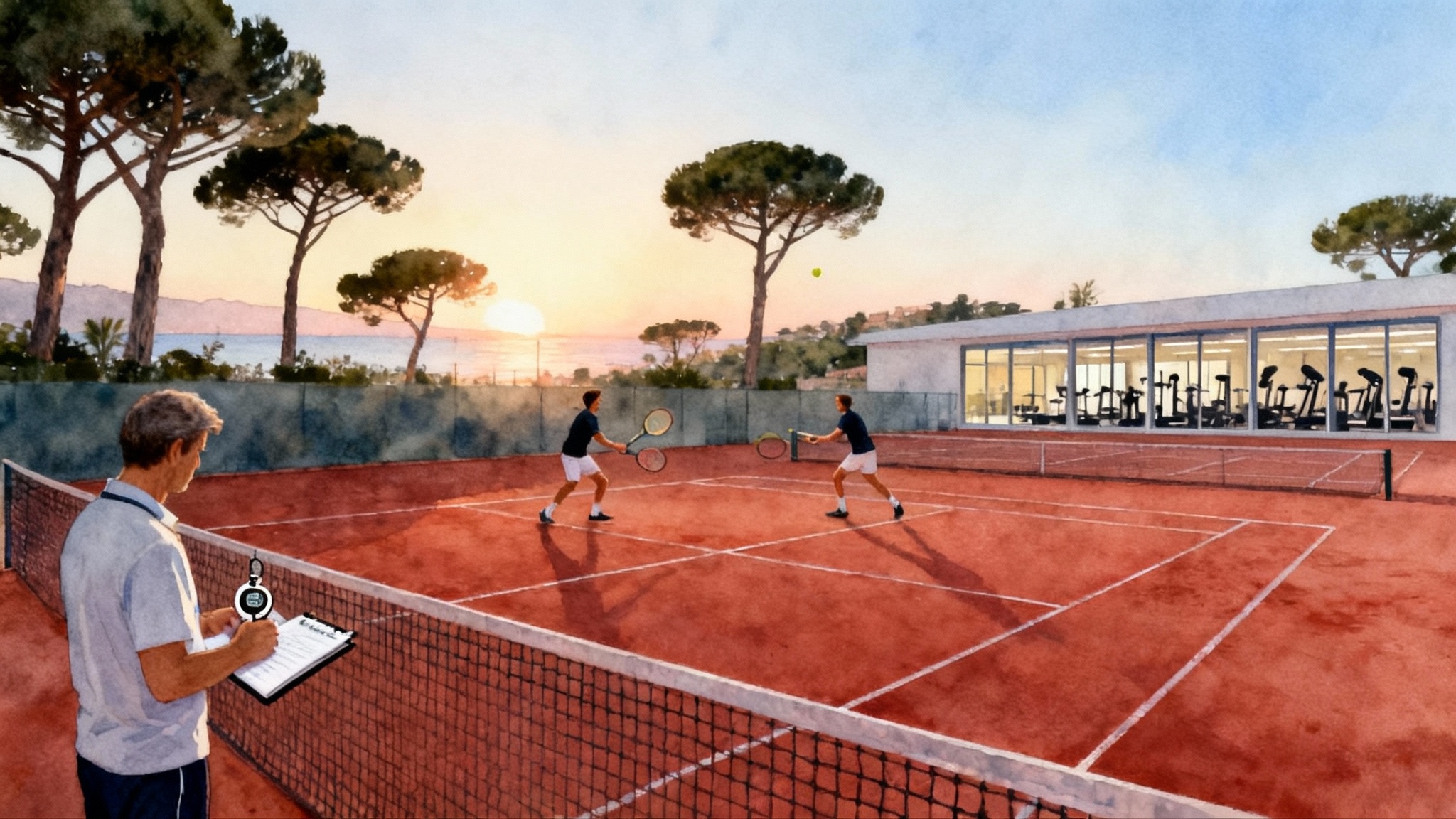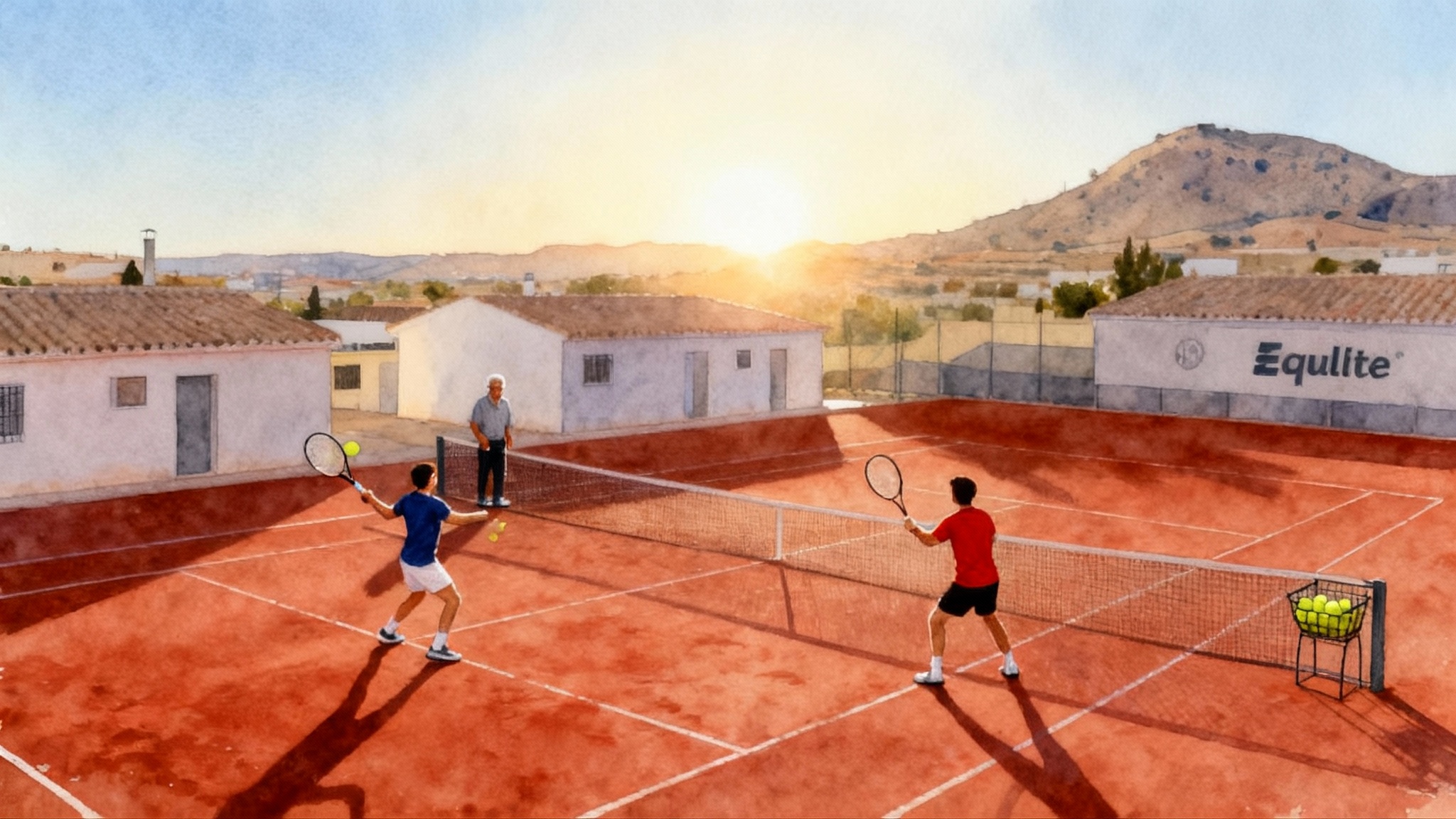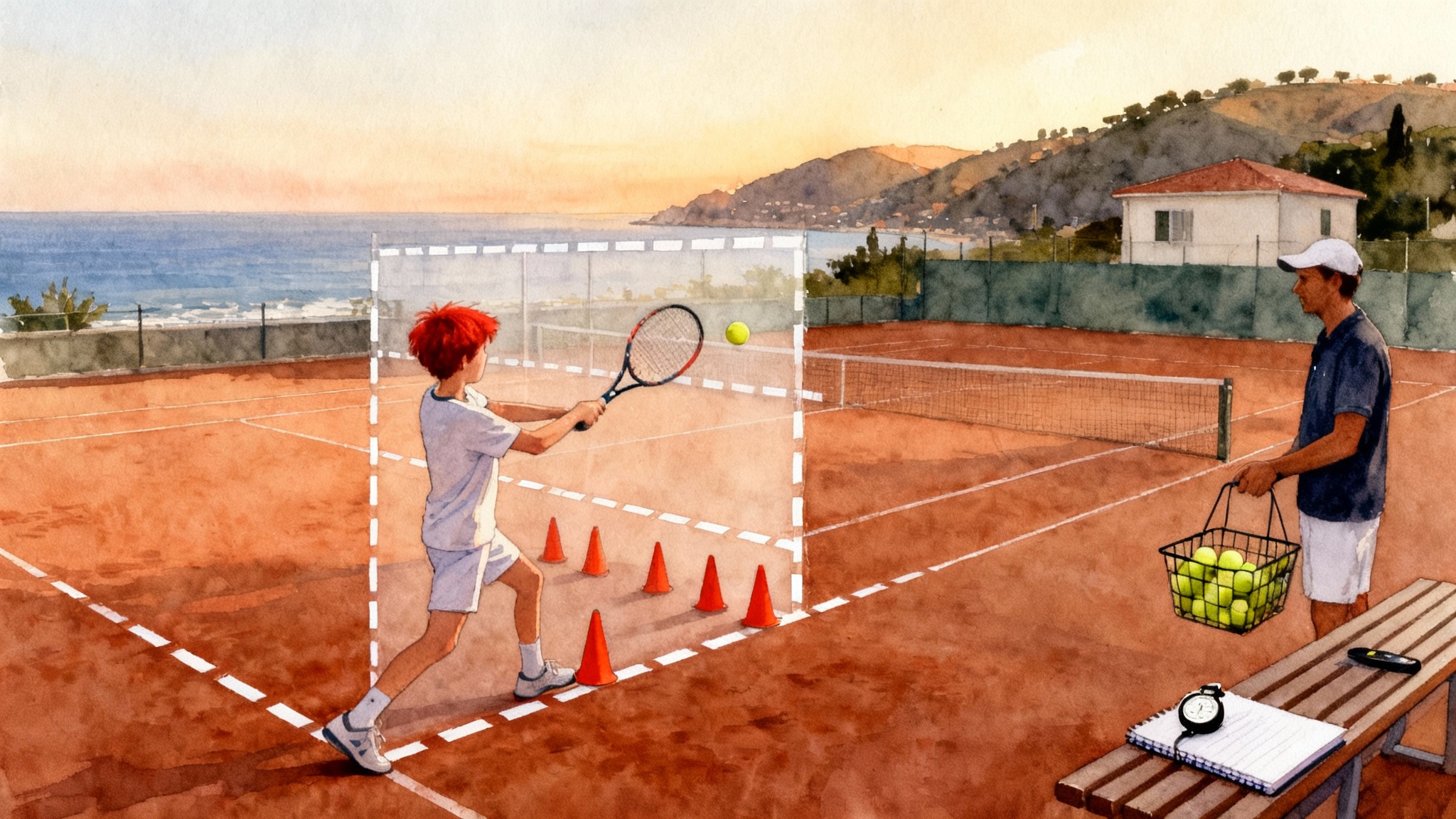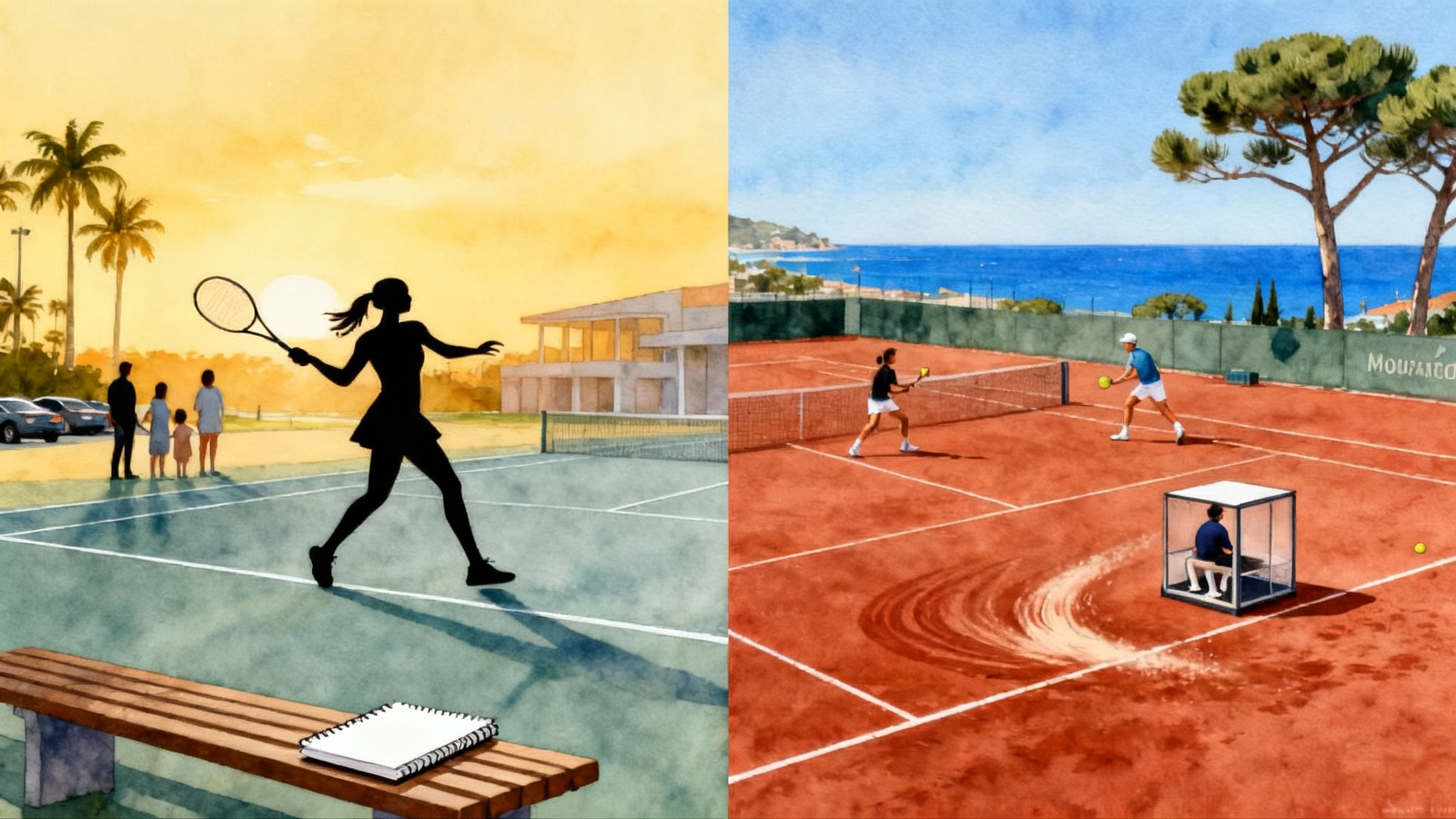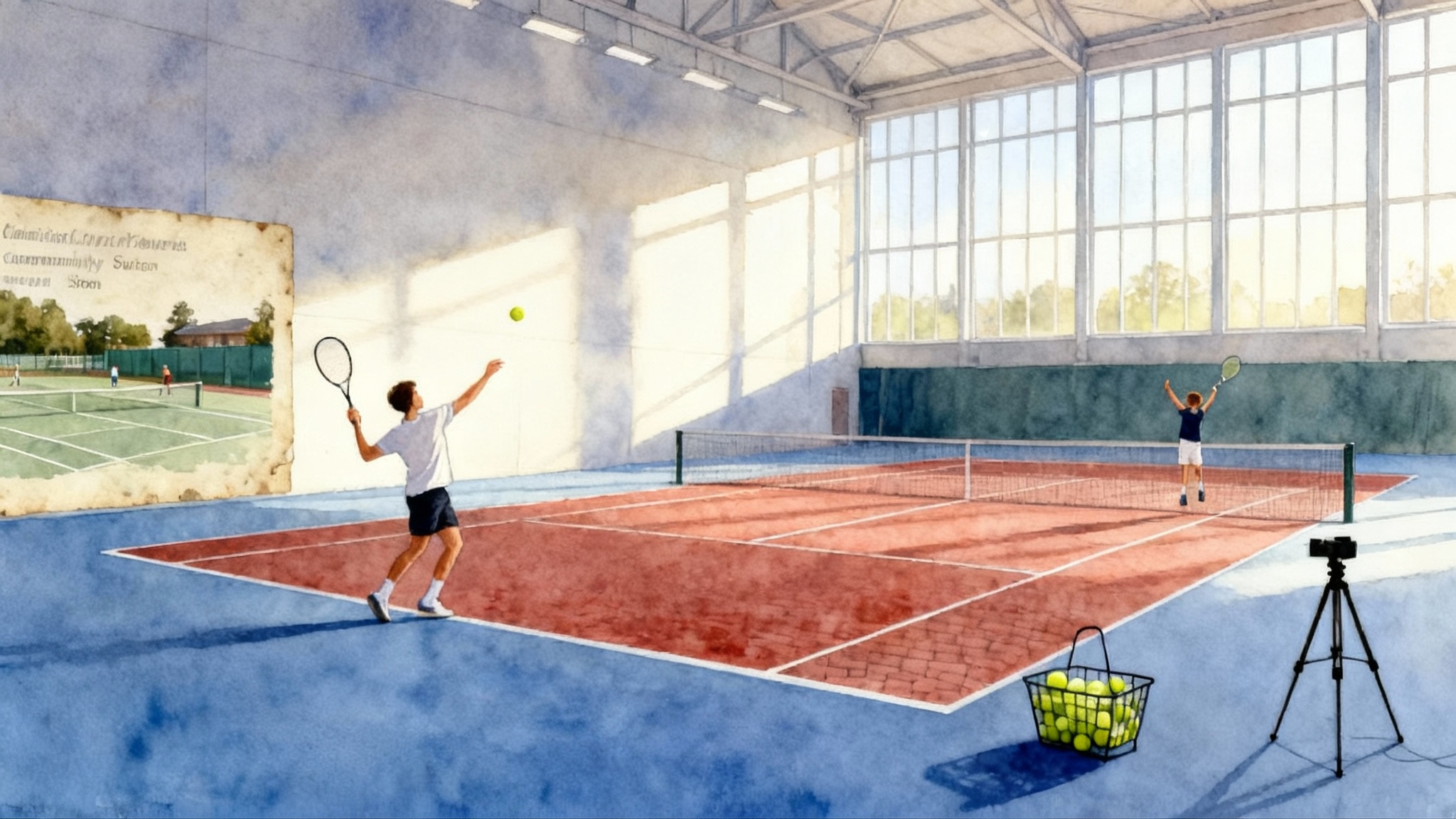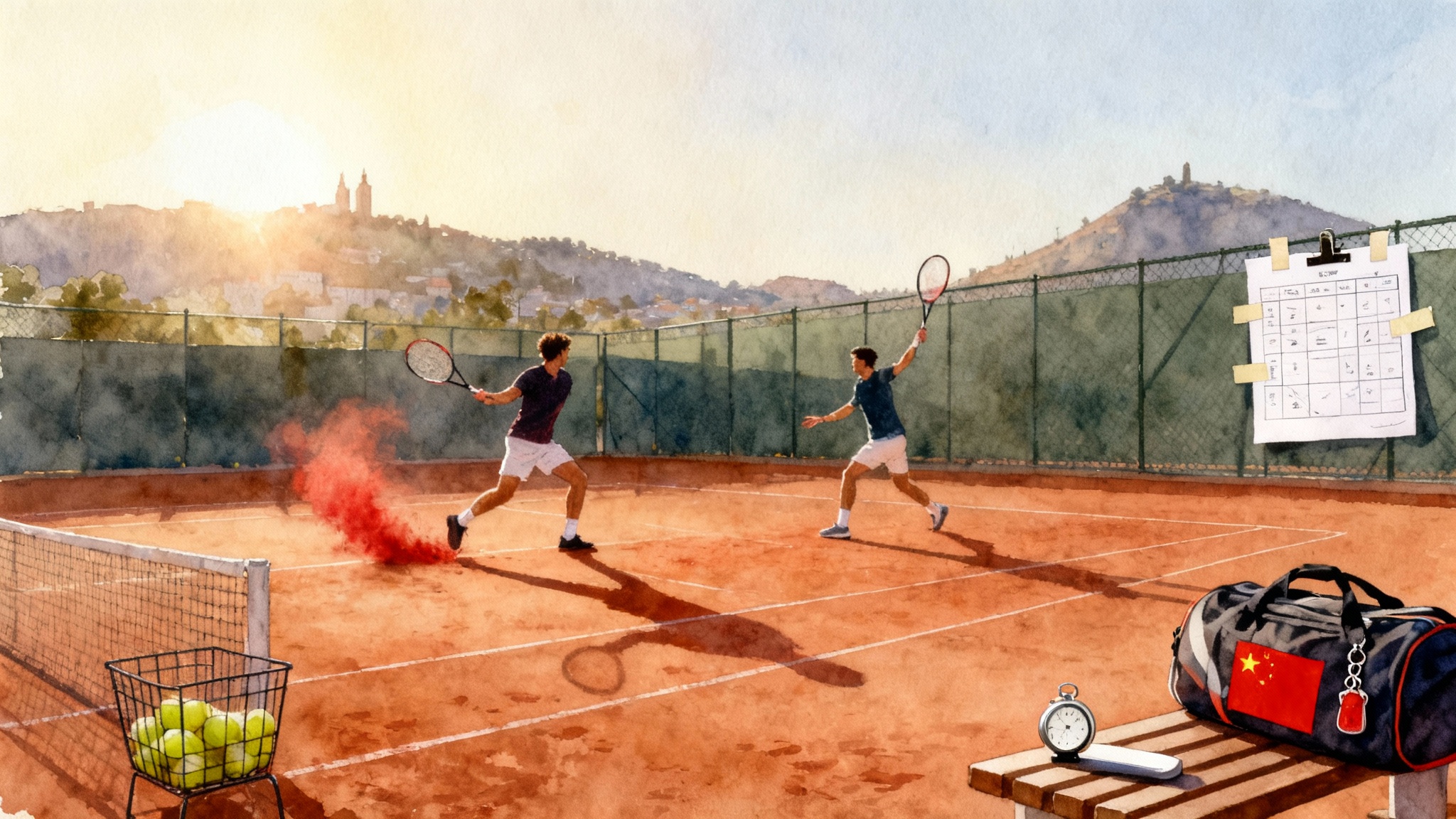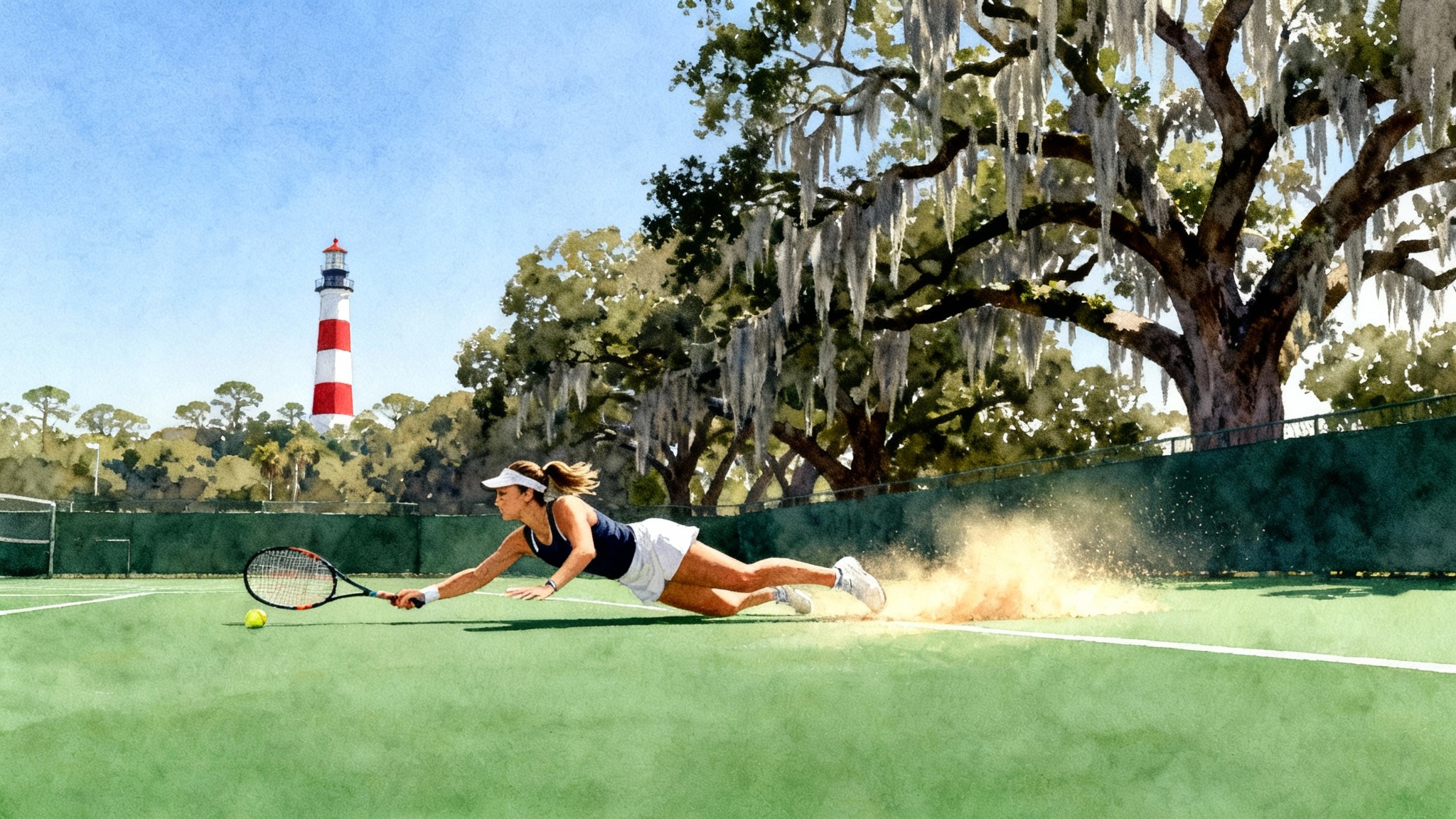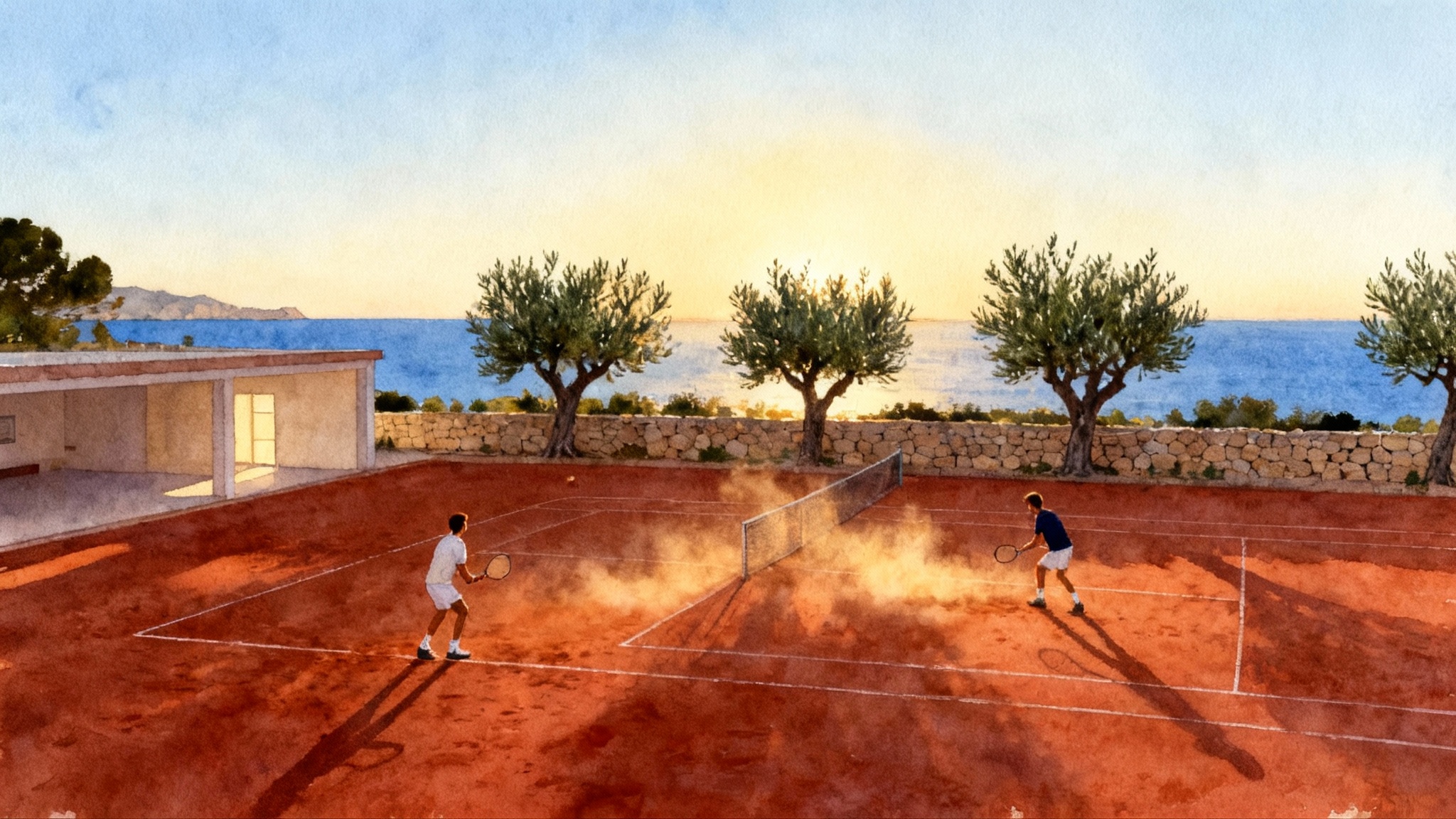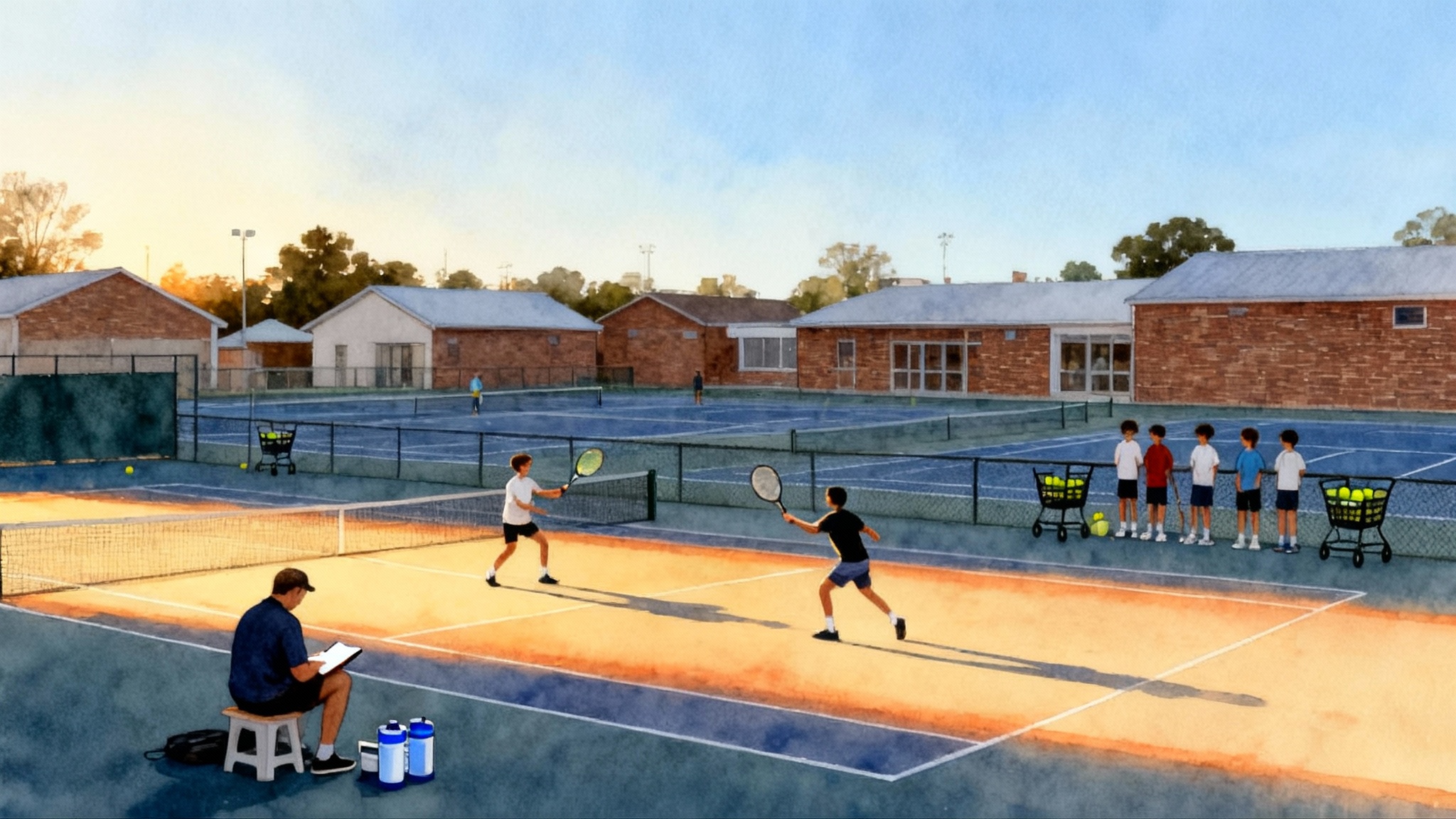Split-Step Mastery: The Footwork Habit That Wins Points
Most rallies are decided before the swing. Learn how the split-step primes your body to react faster, read the ball earlier, and turn defense into offense. Practical cues, drills, and metrics you can use today.
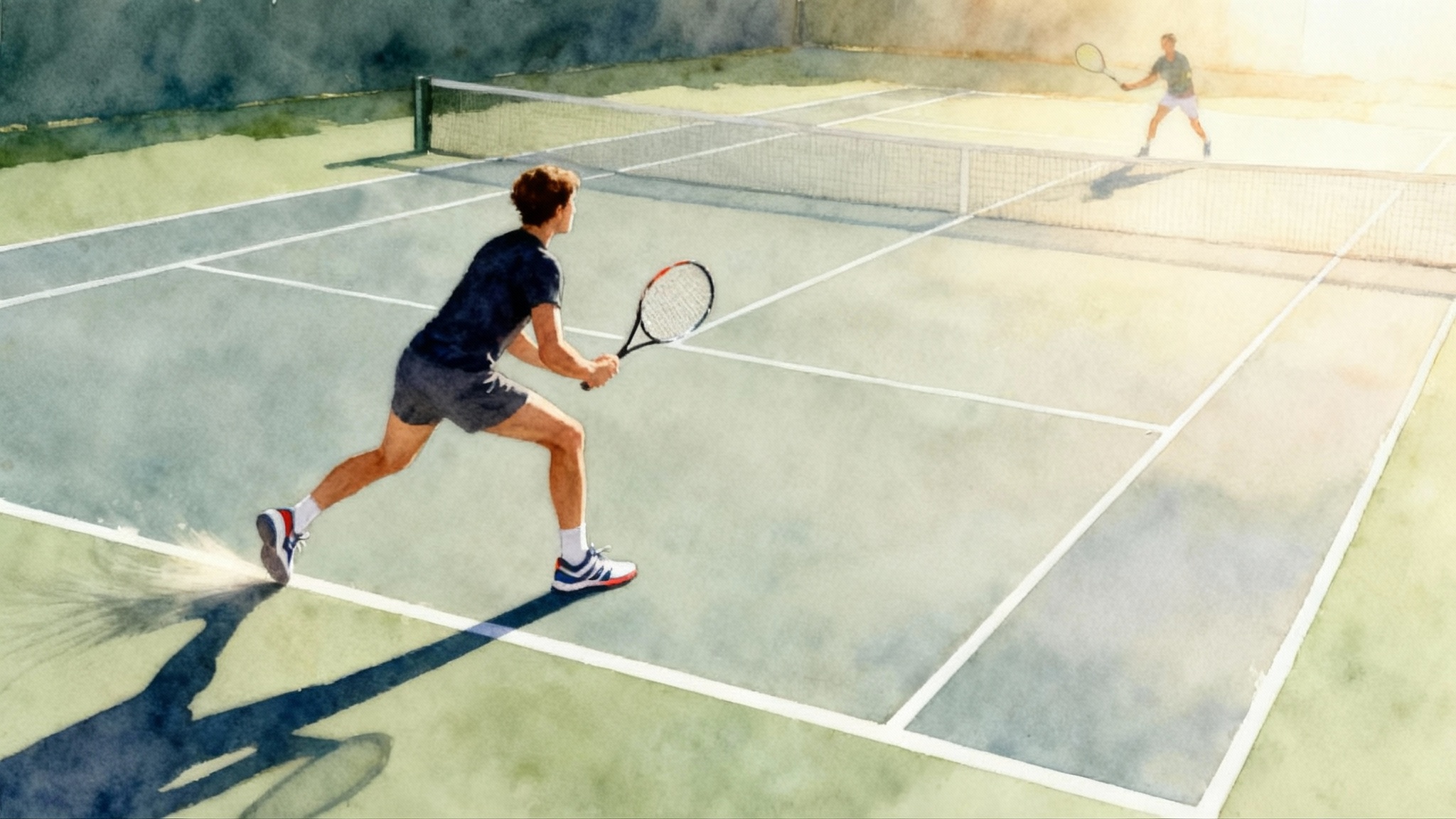
Why the split-step is the quiet engine of modern tennis
Watch any high level rally and freeze the frame at the moment one player strikes the ball. You will see the receiver in the air for a split second, heels unweighted, knees soft, eyes locked on the contact. That hop is the split-step. It looks simple. It is not optional. The split-step is the timing mechanism that lets your body preload like a spring and commit the first step in the correct direction without hesitation.
Players often work for months on bigger forehands or heavier serves while ignoring the half second that decides whether those weapons land. The split-step decides if you arrive balanced, if you can change direction after a bad bounce, and if your next shot is proactive rather than reactive. It is the ignition key for movement.
In plain terms, the split-step buys you time and accuracy. Time, because the body is already unweighted when you need to move. Accuracy, because you read the opponent during the airborne phase and drive your first step as your feet reconnect with the court.
What the split-step actually does
Think of your legs as a coil spring and your feet as sensors. When you hop lightly, you turn the legs on. As you land, the calf and thigh muscles load and then release. If you land at the right instant, that stored energy converts into the first step, often the only step that matters. If you land too early, you sink and stall. Too late, and the ball has already passed the decision point.
There are three parts you can control:
- Cue to start: opponent’s hitting arm accelerating toward contact.
- Airtime: a small, quiet hop, usually less than the height of a tennis ball.
- Touchdown: feet reconnect as the opponent makes contact so you can push instantly.
Novice players often chase the ball first and think later. Skilled players think during the hop and act on landing. That order is the difference between sprinting and skating. Skaters glide into the shot and arrive composed.
The timing window you can feel
Perfect timing is not a single pixel in time. It is a small window. Start your hop as the opponent begins the forward swing. Land as you hear or see the ball meet the strings. If you are indoors and cannot hear clearly, watch the racquet blur. Outdoors in wind, use sound plus the shoulder turn of your opponent. Your goal is not a higher jump but a smarter one. Less height means less time in the air and less chance of missing the window.
A practical cue that works for most players: say up as your opponent accelerates and down at contact. The words match the phases. After a few sessions you can drop the words and keep the rhythm.
Positioning sets up timing
You will split differently at the baseline, on return, and when closing the net.
- Baseline neutral: split about one racquet length behind the baseline, weight slightly forward, racquet head calm at chest height. Expectation is two to three directional steps after landing.
- Return of serve: split is shallower and earlier. You want to land a fraction before contact on slow serves, and almost at contact on fast serves. Do not jump. Stay low and unweight.
- Approach and net: as you close, your split becomes a stab of the feet rather than a hop, almost like a fencer’s ready stance. You land, read, and either close for the volley or retreat one step for a lob.
Common mistakes and what they cost
- Jumping too high: you burn half a second and drop like a rock. The first step is late and heavy.
- Landing early: you sink into your heels and have to re-start. That double start is slow and noisy.
- Landing wide and flat: locked ankles reduce the ability to push sideways. Slight external rotation and springy ankles help.
- Staring at the ball only: you miss opponent cues such as grip change or shoulder line. The split-step is a reading posture, not a ball-chasing posture.
Build it like a habit, not a trick
Habits survive stress. To make the split-step automatic, layer it into every rally, even cooperative ones. If you only split in competitive points, your brain treats it as a special event. You want it to be boring and constant.
Three daily anchors:
- First ball of every rally: split on the feed even if the feed is gentle.
- Every time the ball crosses the net: split, regardless of whether you think you can reach it without moving.
- Before every volley: split as the passer hits. This keeps your hands quiet and your feet honest.
A coach-tested progression you can start today
You can ingrain the timing in under twenty minutes a day. Here is a simple progression that works for juniors and adults.
Phase 1: Solo feel and rhythm, 6 minutes
- Wall shadowing: stand at the service line facing a wall. Mimic an opponent’s swing with your non-dominant hand. Start your hop at the pretend forward swing. Land at pretend contact. Do ten cycles, then hit ten light forehands shadow swings after landing. This ties your first step to your stroke preparation.
- Metronome drill: set a metronome or phone timer between 55 and 65 beats per minute. On one beep say up, on the next say down, and land. Now add a gentle sidestep after each landing. This trains economy and keeps height low.
Phase 2: Partner cues, 8 minutes
- Visual fake: your partner stands across the net and does three fake swings and one real swing. You split on the real swing only. This teaches restraint and reading. Switch roles every minute.
- Two-tone feed: partner feeds alternating crosscourt and down the line. You split on their toss and land as they strike. Take only two steps to the ball and rally back. This limits over-chasing and sharpens first-step precision.
Phase 3: Live balls, 6 minutes
- Crosscourt rally with a rule: you can only hit if you split on every ball crossing. If you miss one split, you lift your racquet and let the ball go. This adds accountability.
- Approach and close: feed yourself a short ball, approach, and split as an imagined opponent strikes. Volley to a target. Recover. Repeat ten times from each side.
Return of serve blueprint
Many players feel overwhelmed on return. The split-step is your anchor. Start in a stance you can hold for fifteen seconds without fidgeting. As the server tosses, do not rock. Begin a tiny unweighting as the server’s racquet accelerates. Land as the strings meet the ball. On slow second serves, land an instant earlier and take ground forward. On very fast first serves, land almost exactly at contact and drive the first step diagonally to the predicted side, not straight sideways.
Use three return lanes. Against a right-handed server in the deuce court, lane one is wide, lane two is body, lane three is tee. During your airborne phase, commit to a lane, not a precise endpoint. Your first step direction should match the lane decision. If the ball deviates within that lane, your loaded legs can still adjust.
Volleys and the short hop
At net, the split-step is shorter and more frequent. Imagine every opponent swing as a camera flash. You blink up, then land into the volley. Keep the hands quiet until you land. If your hands chase before your feet, you will stab at the ball. If your feet land first, your hands can punch through calmly.
A simple net drill: feed yourself a half volley. After each contact, make a mini split as if the opponent is passing. Volley again. Keep the chain going for fifteen shots without stepping backward. This trains stability and forward bias.
How to measure progress without guesswork
Good habits feel right but data convinces. You can measure split-step quality with nothing more than a phone and painter’s tape.
- Setup: place a strip of tape at your baseline station. Place a second strip one shoe length in front. Film from the side at 120 frames per second if your phone allows.
- Metric 1, landing-to-first-step time: count frames between landing and the first visible push. Under 6 frames at 120 frames per second is a strong goal for intermediates.
- Metric 2, height: use the tape as reference. Your hip should not rise more than a fist above your neutral line during the hop.
- Metric 3, quiet hands: during the airborne phase, the racquet head should move less than a grip length up or down. Excess hand motion is a sign that you are jumping rather than unweighting.
Repeat this once a week for four weeks. Improvement shows up as fewer wasted frames and smoother first steps.
Equipment and surface notes
- Shoes: pick a shoe with a stable heel counter and flex in the forefoot. Slippery or worn tread encourages sliding through the landing, which breaks timing.
- Socks: a thin, snug sock can improve foot feedback. It seems trivial until you try it.
- Hard vs clay: on clay, make the hop even smaller and land with a softer knee angle. You want bite before the push so your first step does not skid.
- Indoors vs outdoors: indoors, rely more on visual cues than sound because acoustics vary. Outdoors, use both.
What high performance environments do
Smart courts and performance centers treat the split-step as a key performance indicator. Video systems from companies such as PlaySight and Hawk-Eye Innovations make timing visible. When coaches can pause at opponent contact and see the athlete airborne or grounded, feedback is unambiguous.
In player development stories like Sinner's Piatti Academy path and the Frances Tiafoe JTCC pathway, the most consistent thread is early, repeatable movement timing. Facilities such as IMG Academy Tennis performance setups instrument movement with video and court tech to make timing coachable.
If you do not have access to tech, you can still adopt the same discipline. Build weekly checkpoints and score your own compliance. The habit matters more than the hardware.
A four-week plan
You do not need perfect conditions or long sessions. You need repetition and accountability. Here is a realistic four-week plan for club players and competitive juniors.
Week 1: Awareness and rhythm
- Daily: 6 minutes of Phase 1 solo rhythm.
- Two practices: Phase 2 partner cues for 10 minutes before rallying.
- Goal: land within one frame of opponent contact on 7 of 10 filmed reps.
Week 2: Decision and direction
- Daily: 6 minutes solo, add ten diagonal first steps after each landing.
- Two practices: Two-tone feed drill and live crosscourt with the split rule.
- Goal: reduce landing-to-first-step to 6 frames or fewer on average.
Week 3: Serve and return focus
- Daily: 4 minutes of return rhythm without a ball. Visualize three lanes.
- Three practices: 15 minutes of live returns, recording one set from the side.
- Goal: choose the correct lane during the airborne phase on 8 of 10 returns.
Week 4: Net and transition
- Daily: 5 minutes of mini split and volley chain.
- Two practices: approach and close drill, plus point play that starts with a short ball.
- Goal: maintain a split before every volley in match play, verified by a friend or video.
Coaching cues that stick under pressure
Pressure deletes complicated thoughts. Simple words survive. Use these.
- Up, down, go: up on opponent’s acceleration, down at contact, go on touchdown.
- Land to leave: if you land, you must leave. No dead landings.
- Quiet hands, loud feet: hands stay calm during the hop, feet make the decision.
Tape these cues to your bag. Say them out loud during practice games for one week.
Fixing the two hardest cases
- Players who jump too high: remove the hop for a session. Practice only the unweighting by lifting heels and lowering quietly at contact. Reintroduce a one centimeter hop later. This breaks the jump habit.
- Players who land early: add a tiny delay in the takeoff. Tell them to start the hop half a beat later. Use the metronome trick to stretch the airborne phase closer to contact.
Why this scales from juniors to adults
Juniors have elastic tendons and fast nervous systems. Adults bring pattern recognition and patience. The split-step rewards both. For juniors, the habit turns raw speed into shotmaking because they arrive balanced. For adults, it offsets slower top speed with earlier decisions. Either way, the payoff is the same: more time where it counts, at contact.
A simple match checklist
Before warmup:
- Visualize three returns in each lane and one approach split at net.
During warmup:
- Say up and down out loud for the first five exchanges.
First two games:
- Judge your landing height. If you feel bouncy, reduce it by half.
At 2 all:
- Film one game from the side. Check landing at contact once between points.
Closing games:
- Commit to a split on every net exchange. Points tighten late. Feet keep decisions honest.
Case study: turning defense into offense
A sixteen year old right-hander struggled to neutralize heavy crosscourt forehands. She was late on the first step and arrived leaning. In two weeks we made three changes. First, she reduced hop height by half. Second, she started the hop on the opponent’s shoulder acceleration, not the backswing. Third, she aimed her first step diagonally forward, not sideways. Result: landing-to-first-step dropped from 8 frames to 5 at 120 frames per second. Her rally forehand contact moved one foot further inside the baseline. Her error rate under pressure fell by a third. Nothing else in her technique changed. The split-step unlocked time that was already on the court.
Your next session, simplified
- Pick one court position to fix: baseline neutral, return, or net.
- Use one cue: up, down, go.
- Track one metric: landing-to-first-step frames.
Run that for seven days. Then move to the next position. Resist the urge to overhaul everything at once. The split-step is the smallest lever that moves the most weight.
The quiet skill that changes how you hit
The best movement does not look fast. It looks early. The split-step is how you arrive early. It turns uncertainty into a plan and panic into posture. Treat it like brushing your teeth. Invisible when it works, expensive when it does not. Build it into every point and let the rest of your game breathe.
